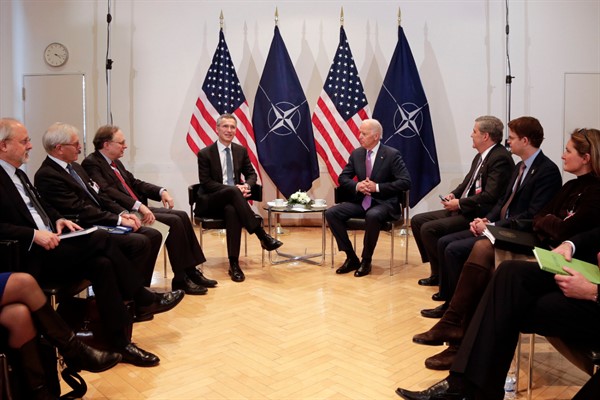International expectations are high for Joe Biden’s presidency, but perhaps nowhere more than in Europe, where political leaders and observers see an opportunity to revitalize the trans-Atlantic relationship after years of drift and then downright antagonism under Donald Trump. They have reason to be optimistic. Biden and his pick for secretary of state, Antony Blinken, are confirmed Atlanticists. They recognize that, despite Asia’s rise, the United States and Europe are still the load-bearing pillars of any open and stable international system. The president-elect has pleased Europeans so far by pledging to return to the Paris Agreement on climate change, remain in the World Health Organization despite Trump’s attempt to leave it, reengage in diplomacy with Iran, deescalate trade conflicts and generally follow the path of multilateralism.
But this can’t be just a “back to the future” moment. Renewing the trans-Atlantic partnership will require adapting existing security, political and economic arrangements to new transnational threats, geopolitical rivalries and domestic realities. Reforming NATO and deepening the relationship between the U.S. and the European Union will be central to this agenda.
Going back to the late 1940s, 13 successive Democratic and Republican administrations promoted both NATO and European integration in the interest of uniting the world’s leading democracies, a club to which others—Japan, Australia and South Korea among them—also came to belong. To be sure, trans-Atlantic ties eroded during George W. Bush and Barack Obama’s presidencies, hastened by the former’s disastrous invasion of Iraq and the latter’s “pivot” to Asia, which appeared to come at Europe’s expense. But it was Trump’s election that posed the first existential threat to allied solidarity. He questioned the U.S. commitment to NATO, actively encouraged the EU’s dissolution and generally took a wrecking ball to the West.

